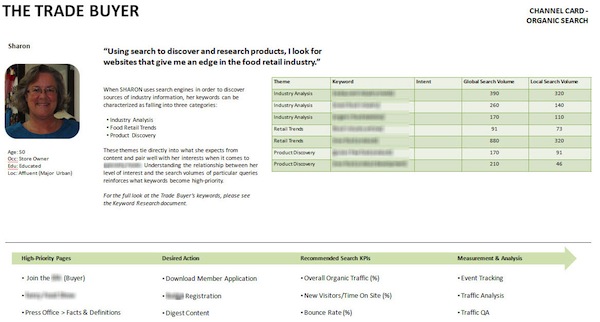It wasn’t so long ago that, when educating the uninitiated on the SEO process from the bottom up, we would explain that keywords are foundational to SEO – start with your keywords and work up from there.
Lately, we’ve seen some very fascinating (though not unexpected) developments from Google that give users ever more control in the driver seat.
Hummingbird was a big stride toward better semantic and conversational search. “(Not provided)” took website visitor keywords data away from us. Keyword search volume data moved deeper inside AdWords with the Keyword Planner. Meanwhile, user segmentation was introduced to Google Analytics, giving marketers the ability to perform cohort analysis.
The message is clear: Google is moving away from keywords. Today’s SEO is about the user and the way people explore using search queries. In fact, digital marketing as a whole is moving further into user-centricity; we, as SEO professionals, are on the bandwagon whether we like it or not.
So how do we put the user-centric concept into practice for SEO?
Keyword research is as important as ever, but we now start with searcher personas (which are very similar to user personas, marketing personas and customer personas). We use the keyword research as a data source to better understand those personas, a concept well established in marketing.
Personas: The Fundamentals
There are two main functions of the persona: to provide context around the users represented by the persona and to create a sense of empathy for those users.
In the ideal world, we would be capable of understanding and being empathetic towards each and every potential customer. Since that’s impossible at the scale we work in, the idea is to group target customers together and give each group the qualities of an individual human. So each persona you create will effectively “speak for” all users represented by it.
To understand the concept of the persona, you need to understand the concept of the archetype. The definition of an archetype is “…the original pattern of which all things of the same type are copies.”
Read up on Carl Jung, a famous Swiss psychoanalyst, to further your knowledge in this area. A classic example of the archetype is “The Shadow,” who is expressed in popular culture by a variety of characters like Darth Vader, Agent Smith or Mr. Hyde.

Although each of these characters has unique qualities, they also share a number of collective qualities: those of “The Shadow.”
When we’re building a persona, we will use data (like keyword search volumes, market research, user polls, web analytics, etc.) to find those collective qualities that are similar across a large group of people. When it comes down to actually creating our persona, we want a character that is like a real person.
A real person isn’t in the 35-45 year old age bracket. A real person was born at a specific time on a specific day.
In creating personas, we seek precision over accuracy. We will give our persona a specific age, knowing that it doesn’t accurately reflect the age of each person represented in our persona.
Incorporating Searcher Personas into Your SEO Work
Ideally, when beginning your persona development efforts, you will take a “top-down” approach, where you begin by creating digital marketing personas that will work across all channels (not just search engine marketing). You continue by performing deeper analysis on the habits of each persona from the natural search perspective.
I prefer this approach because the same high-level personas can be used to tie together all digital (and maybe even offline) marketing efforts – everyone involved in marketing and content production (not just the SEO) uses the same personas.
When you’re ready to start building personas, think about your process. Consider something like this:
- Choose target personas. What types of people are you looking to attract to your website? Group them together into 3-5 types of people and give them titles that reflect who they are.
- Sticky noting. Gather some team members together and brainstorm to flesh out each of your personas using your own existing knowledge and assumptions. Some people use actual sticky notes; I prefer a big Excel spreadsheet.
- Define business context. Check your work to be certain that each persona is aligned with your business objectives and offerings, and that you fully understand the context. Add this to your sticky noting.
- Gather data. This is possibly the most challenging portion of the process. Data is not easy to get a hold of and the good stuff is usually very expensive. It’s extremely important that you use the right data and interpret it correctly, as you don’t want to let poor data interpretation steer your personas off course. For search, your keyword research is an important data source.
- Create cards. Gather all of your sticky noting and data together, then summarize it all on one shareable, printable, visually attractive “card” (a PowerPoint slide works like a charm) for each persona. Remember that you are aiming for a precise, not accurate, portrait of your persona.
The end result may look something like this:

Ultimately, you want everyone involved in marketing to be thinking and talking (and dreaming) about the target personas when developing and executing marketing initiatives. The personas are the “people” you are marketing to, whose needs you are serving.
There is much more to share on the subject of building data-driven personas, and how the keyword research process is impacted. We would love to know, for future discussions: do you already use (or plan to use) personas in your search engine marketing initiatives?
Wes Walls of iProspect contributed to this post.

